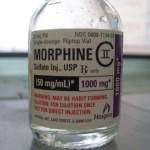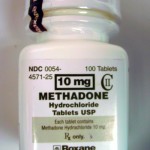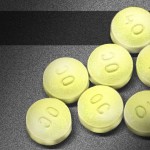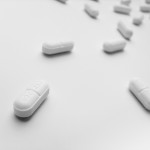Jump to Section:
Opium has exerted its seductive power for centuries, drawing millions of people into a destructive cycle of dependence and addiction. In this natural state, opium comes from a milky polymer produced by the opium poppy, or Palaver somniferous. Opium contains several chemical compounds — including morphine, codeine and thiamine — that interact with specialized cells that regulate sensations of pain and pleasure. These specialized cells are located in the central nervous system (brain and spinal cord), outlying nerves, and digestive tract.
All drugs derived from opium, or drugs that act like opium in the brain, are classified as opiates. Because opiates can generate intense feelings of euphoria and deep relaxation, they are widely abused for recreational reasons. But these drugs also depress vital functions like respiration and heart rate, and an overdose can cause unconsciousness, coma and death.
Types of Opiates
For thousands of years, naturally occurring opiates like opium, morphine and codeine have been extracted from the fluid of the opium poppy. In more recent times, drugs that replicate the effects of opium have been produced in pharmaceutical labs.
These synthetic or semi-synthetic opiates can be just as powerful, if not more so, than non-synthetic opiates:
- Heroin: Sold on the streets as “smack,” “dope,” “Big H,” “brown sugar,” “black tar,” “junk,” “sag,” and many other nicknames
- Oxymoron: Used in OxyContin, Percocet, and other medications
- Hydrocodone: Found in Vicodin, Norco, Lortab, and other prescription drugs
- Hydromorphone: The active ingredient in Dilaudid
- Methadone: Sold as Methadose or Dolophine, this synthetic opiate is used in rehab programs to help addicts manage cravings and avoid withdrawal
While some opiates, like heroin, are illegal and have no accepted medical use, most opiates on the market today are legally available with a prescription. At one time, street narcotics like heroin were considered to be a greater threat than prescription painkillers. But in the 21st century, the number of Americans abusing prescription opiates like oxycodone and hydrocodone exceeds the number of people abusing heroin. At the same time, opiate-related overdoses and fatalities have increased dramatically. CDC Vital Signs reports that:
- There are roughly 15,000 deaths from prescription opiate overdoses in the US each year.
- The number of prescription painkiller overdoses in the US has tripled since 1999.
- About 5 percent of American adults use prescription painkillers for recreational purposes in any given 12-month period.
- In 2009, prescription opiate abuse accounted for about half of emergency room visits in the US.
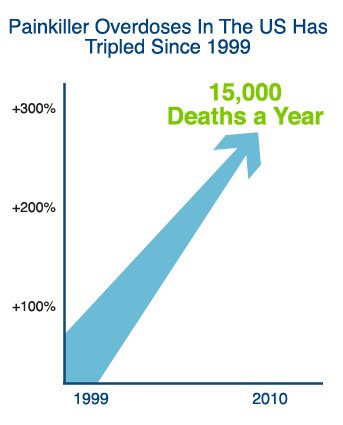
Addictive Properties
When used for legitimate medical reasons under a doctor’s care, opiates can provide highly effective pain control, allowing people with serious illnesses or injuries to lead more comfortable, independent lives. But the recreational use of opiates can quickly lead to physical and psychological dependence – the first step in a deadly cycle of addiction.
How does opiate addiction begin? Most people who start using opiates have no intention of becoming addicted. However, as receptor cells in the central nervous system adapt to the presence of an opiate drug, the user needs higher doses of the opiate to achieve the same effects. This condition, known as tolerance, can lead to dependence.
Many chronic pain patients who take opiate analgesics with a doctor’s prescription become dependent, yet they never experience the compulsive behaviors or devastating health consequences of addiction.
In opiate dependence, the user needs the drug in order to feel normal and to avoid the unpleasant side effects of withdrawal, including:
-
- Anxiety
- Chills
- Sweats
- Nausea and vomiting
- Diarrhea

-
- Goosebumps
- Abnormal movements
- Muscle aches
- Runny nose
- Watery eyes
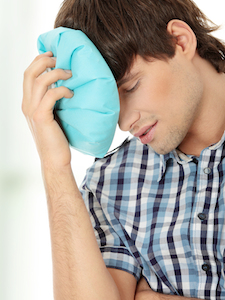
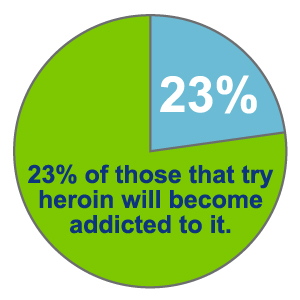 Addiction is one of the most common — and most dangerous — complications of opiate abuse. The National Institute on Drug Abuse estimates that about 23 percent of people who start using heroin will become addicts.
Addiction is one of the most common — and most dangerous — complications of opiate abuse. The National Institute on Drug Abuse estimates that about 23 percent of people who start using heroin will become addicts.
Although withdrawal is rarely fatal, the effects of suddenly stopping opiates or cutting down the dose can be intensely uncomfortable, and the cravings can be overwhelming. According to Advances in Clinical Psychiatry, the majority of addicts will relapse. The Journal reports that in one study of patients at an outpatient opiate detox program, only 12 percent remained abstinent after being discharged. Effective treatment for opiate addiction requires not only a period of detoxification, but also intensive rehab and aftercare to ensure optimal success.
Recognizing the Signs of Addiction
Addiction is a compulsive, relapsing disease that affects both the mind and body. Individuals who are addicted to opiates become obsessive about seeking, obtaining and using their drug of choice. They may lie, steal money, steal prescription medications, or sell drugs in order to support their habit. Drug abusers will often see multiple doctors, exaggerate their symptoms, or forge prescriptions.

People who are abusing opiates may sleep for long periods of time. Intravenous drug abusers may wear long-sleeved shirts at inappropriate times to hide needle marks. They may lose their appetite and avoid family meals or other activities. An addict will often lose interest in hobbies and social events as the drug takes over his or her life.
Addictive behavior is not the only sign of a serious drug problem. These physical signs and symptoms may indicate that someone in your life is abusing opiates:
- Pinpoint pupils that don’t respond to light
- Pale, cool skin
- Constipation
- Drowsiness in the daytime
- Confusion
- Slow or slurred speech
- Slow breathing
- Itchy skin
The Importance of Rehab
The majority of opiate addicts who try to quit on their own will not succeed over the long term. As a result, they are at high risk of the physical and psychological health risks of addiction, including respiratory problems, anxiety, gastrointestinal disorders, suicidal behavior, overdose, and accidental or intentional death. Addicts who take opiates intravenously (a practice called “shooting up”) are at high risk of blood-borne diseases like hepatitis and HIV/AIDS. The social costs of addiction — unemployment, poverty, homelessness, broken relationships — can be just as devastating.
At Axis Treatment Centers, we offer the support you need to overcome opiate addiction and lead a healthy, fulfilling life. With treatment facilities in Indian Wells and Los Angeles, CA, we provide a full range of residential, outpatient, and sober living services. Call our admissions specialists today for a confidential discussion of your needs.



